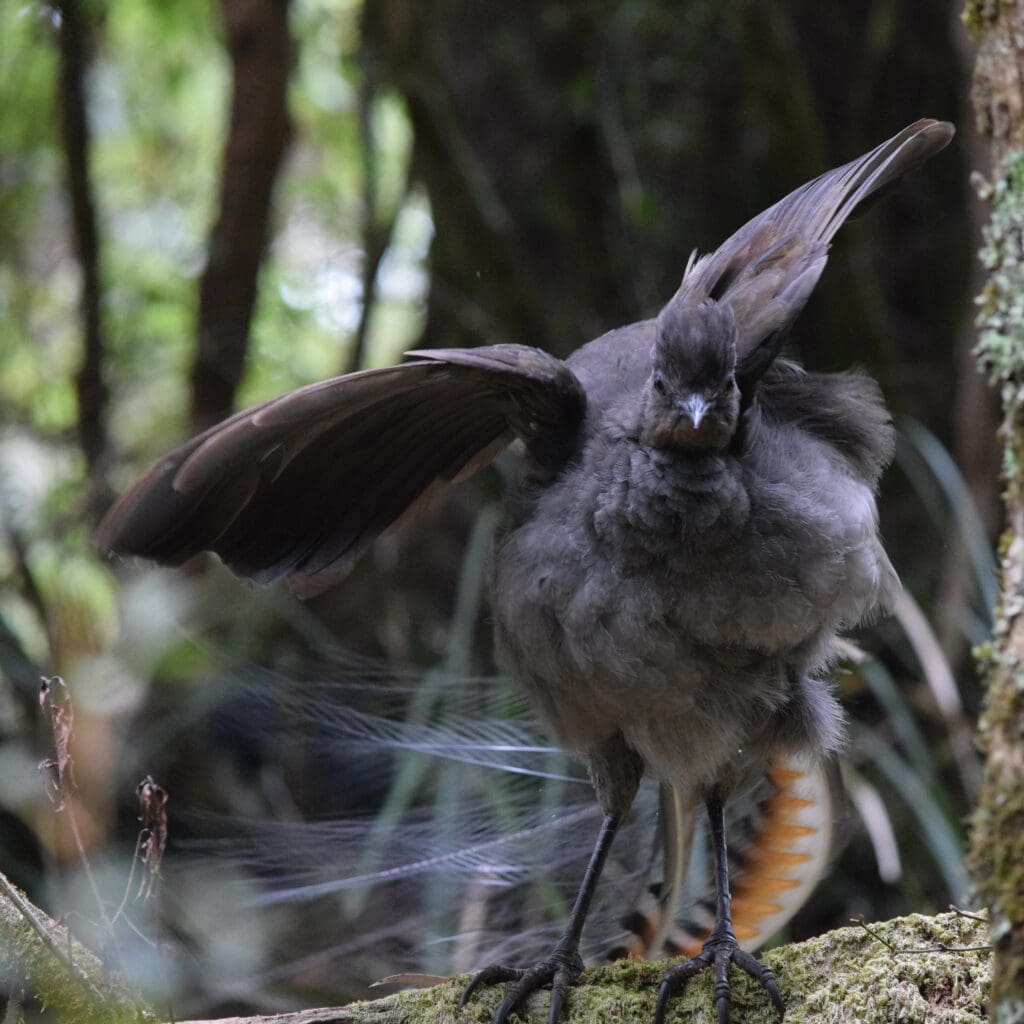From bill to tail the Superb Lyrebird can reach over three feet in length, making it one of the largest songbirds in the world. There are two birds that belong to the Lyrebird genus “Menuridae,” and both dwell in eastern Australia. The Superb Lyrebird is the vastly more common of the two, sharing its name with the much rarer Albert’s Lyrebird whose range is quite limited.
Both Lyrebird species share a pheasant-like appearance, with powerful legs and a distinctive tail that is said to be shaped like a lyre. This is the origin of the Lyrebird’s name. When it comes to its tail, though, the Superb Lyrebird really earns its “superb” moniker. Unlike the Albert’s Lyrebird, the Superb Lyrebird’s tail is an elongated ornamental display piece that plays a key role in the bird’s breeding strategy.
Related Article: Species Spotlight: The Harpy Eagle
Fun Facts About the Superb Lyrebird
The Superb Lyrebird is a fascinating animal with plenty of unique features that make it stand out from even its closest relative. Let’s explore some fascinating Superb Lyrebird fun facts!
A singer and a mimic: The Superb Lyrebird’s name already evokes an aura of musicality. This, it turns out, is apt. The Superb Lyrebird is an incredible singer with a highly developed syrinx — the vocal organ that allows birds to produce sound. Even more impressive is the fact that the Superb Lyrebird is able to mimic a stunning range of sounds from its environment. From the calls and songs of native wildlife, to manmade noises like cellphones, car alarms, or chainsaws, Superb Lyrebirds develop and hone a repertoire of sounds from their environments. It is estimated that roughly 80% of a Superb Lyrebird’s song is made up of imitations. This mimicry is important, because male Lyrebirds use their repertoire of songs and sounds, along with their impressive tails, to attract a female.
A dramatic romance: To attract a female, a male Superb Lyrebird builds a stage of dirt upon which he begins to perform his show. Under the discerning eye of the females that visit his stage, the male throws his tail forward, shakes his body, and unleashes his songs and calls. The quality of his display is taken as an indicator of physical fitness and, if the female is impressed, the two will mate. Afterwards they separate and the female incubates the egg and rears the chick on her own.
Foraging feeds the forest: Though they are songbirds, you wouldn’t be alone in thinking that Superb Lyrebirds resemble some kind of foul. Like a turkey or similar forest-dwelling fowl, Superb Lyrebirds are ground-dwelling, but roost in trees. They also forage by scratching at the leaf litter, exposing bugs and worms to eat. Their near-constant foraging might not look like a major accomplishment, but believe it or not, it actually plays a vital role in the health of their forest habitats. Superb Lyrebirds disturb so much leaf litter and to such a degree that it speeds up the decomposition of the debris, allowing important nutrients to reenter the ecosystem at a faster rate. Basically, the Superb Lyrebird is an accidental composting machine for the forest!
The Future of the Superb Lyrebird
In decades past, there were fears that the Superb Lyrebird might face extinction. Concerns became so serious that a small population was introduced to Tasmania in the hopes that this population would persist even if the mainland Australian population died out. This did not occur and to this day the Superb Lyrebird’s conservation status is listed as “Least Concern” by the IUCN’s Red List of Threatened Species. This is a relatively safe position, but it’s worth pointing out that the Superb Lyrebird is in decline, even if its population remains relatively stable. Habitat loss and degradation, as well as the prevalence of introduced invasive predators remains a threat to this unique ground-dwelling songbird.
Popular Article: Species Spotlight: The American Dipper

